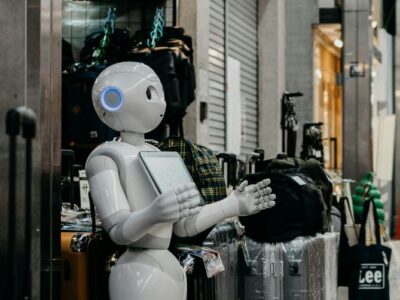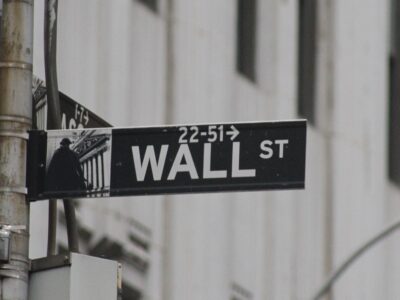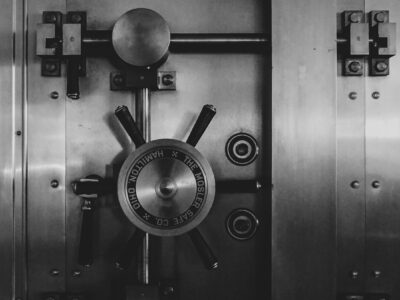Commentary – 2020 4th Quarter
10/22/2020

Optimism is quite thin nowadays. Political and social strife aside, there simply is not much to get excited about. Long-term interest rates, or implied growth prospects, have never been lower. Productivity growth has been dismal and unemployment levels remain high. COVID-19 certainly created, or at least exacerbated, some of these problems. But no matter who you vote for in November and no matter how we adapt to the “new normal,” the U.S. economy will still face the same problem—an addiction to cheap money.
Expect the Unexpected
The stock market today is less about a fair assessment of value as much as it is a representation of game theory. The price of a given company’s stock, or the market, moves based on forecasts, revisions, and expectations. Tesla’s market capitalization started this year at approximately $75 billion and it is now just shy of $400 billion[1]. For a business valuation to be increased five times, a rational investor would likely deduce that the company increased its revenue, bolstered profitability, introduced a new product line, or acquired a competitor. The best explanation for Tesla’s meteoric rise is that electric vehicles are assumed to be the wave of the future.
The reason we highlight the absurdity of Tesla is that expectations play a big role in the disconnect between the economy and the stock market. From the start of COVID lockdowns in March through today, analysts continue to revise their GDP and unemployment forecasts for the better. So, while GDP remains in negative territory and unemployment remains high, the market is positive based on expectations that are better than once expected.
Think about that statement—the expectations of the expected. Sounds ridiculous, but it’s how the market trades. Consider SoftBank, a large institutional investor. They had $4 billion of derivatives (options agreements to buy or sell for a fixed price) worth a nominal amount of $30 billion active in the market[2]. The primary effect from this type of activity is that stock market volatility is magnified.
Warren Buffet was once quoted as calling derivatives “weapons of mass destruction”. He was mostly proven right after the 2008 financial crisis when the ultimate undoing of big banks was a careless use of derivative securities.
This time around, the culprit may not be who you would expect. From The Economist –
“The total nominal value of calls traded on individual U.S. stocks hit a record high the last two weeks of August, averaging $335 billion a day, according to Goldman Sachs—the first time the average daily volume of stock options exceeded trading volume for the shares themselves. The volume of calls was more than triple the average between 2017 and 2019.
Small buyers have spent over $37 billion on call options, giving them exposure over $500 billion. With the five largest tech stocks worth a combined $6 trillion, this is a lot of clout.”
This means that retail investors, armed with a smartphone and a copy of Barron’s, are increasing the impact of each dollar invested by over 10 times. At the same time, the Federal Reserve is increasing the money supply at breakneck speed and government stimulus round two is being discussed. It’s no wonder that Amazon’s share price has almost doubled since March[3]—there is more air being blown into the bubble. Against a backdrop of falling interest rates and sputtering economic activity, the question “where is inflation?” becomes concerning (more on that in section three).
For now, investors are less focused on the long-term. They are still baffled by the current disconnect between the economy and the stock market—United States GDP is down an annualized 9% in 2020, but the S&P 500 is up almost 6% year-to-date[4].
The simplest explanation is that since March, the Federal Reserve has increased its balance sheet from $4.3 trillion to $7 trillion. That’s more stimulus than the entire 2008 financial crisis[5].
The last time the central bank started to wean the economy off cheap money in late 2018, the market reacted harshly. That was an entire decade after that excess liquidity started during the Great Recession. The fear is that this time a sudden pullback could be catastrophic, but a continued addiction may only delay the inevitable.
Pandemic Planning
Over the past two quarters, we discussed financial planning topics related to the CARES Act and the PPP Loan Program. COVID has forced individuals and corporations alike to reassess their financial strategies, and in many cases, it’s not related to legislation or government stimulus. Amazon has started using offices as distribution centers due to the increased demand. Tech-enabled companies are keeping their workforce remote.
Most of us have experienced some form of quarantine or shutdown, but everyone has responded differently. We have come across several situations with the potential for some major unintended consequences. Here are some things to look out for if any of these apply to you:
- You worked remotely (or on-site) in another state[6]. If you hunkered down in a different state due to COVID-19, your tax situation is about to get a little more complex. The longer you were away from your home base, particularly as we approach the sixth month of remote work for many people, the greater the chances you might have a tax obligation in your temporary abode. People who work in one state but reside in another can wind up facing a tax liability in both locations. States have different ways to reduce complexity for these individuals. For instance, there can be reciprocity agreements between two or more locales, as is the case for New Jersey and Pennsylvania, to prevent income from being taxed twice. You would still, however, need to file two state returns.
- You have a student loan balance[7]. The interest rate on federal student loans is set to 0% through December 31, 2020. All loans from the federal direct loan program, including subsidized, unsubsidized and PLUS loans, qualify for the government’s student loan relief options. Be sure to check your account—any automatic payments were halted as part of this legislation. Now is a good time to make additional payments before interest kicks back in. Private student loans did not receive the benefits of forbearance, but now is a good time to explore potentially refinancing due to low interest rates.
- You deferred payroll taxes[8]. Employees have had the option to defer the 6.2% tax paid toward Social Security since September 1, 2020. This is only a deferral—it is not forgiveness of the tax owed. Employers are responsible to collect the tax owed from deferrals by April 30, 2021. So, if you did participate in this program to boost your paycheck, ask your employer how they intend to collect this tax and what it means for your bottom-line next year.
- You received a PPP loan[9]. The Small Business Administration opened the forgiveness portal for its Paycheck Protection Program loans in August, but business owners may want to think twice before rushing in. Since that time, it has already been changed that loans under $50,000 qualify for “simple forgiveness” (i.e. no questions asked). As guidance continues to change, the major question is: Will expenses covered by these forgivable loans be deductible on tax returns? Until this is answered, it may be best to wait.
There are a ton of other planning issues which changed this year due to COVID, including the suspension of required distributions from retirement accounts, as well as the ability to retroactively roll back previously taken distributions.
Not to be forgotten, the SECURE Act (not COVID-related) changed the landscape for retirement account beneficiaries way back in January.
Now is a good time to assess whether any of these situations apply to you and start planning for 2021.
The Age of Disorder
Ever since the double shock of collapsing oil prices and the advent of the pandemic six months ago, it has looked as though the existing world order cannot hold. That order, associated primarily with the names of Paul Volcker, Margaret Thatcher and Ronald Reagan, was built around independent central banks and aggressive globalization. What started with some two decades of impressive growth has been followed by another two decades marked by repeated crises, deepening inequality, and discontent. Did COVID-19 administer the coup de grace?
The latest Long-Term Asset Return Study by Deutsche Bank’s veteran financial historian Jim Reid addresses this question and is a fascinating read. He suggests we have seen five distinct global economic eras since 1860, and are now entering a sixth:
- The first era of globalization (1860-1914)
- The Great Wars and the Depression (1914-1945)
- Bretton Woods and the return to a gold-based monetary system (1945-1971)
- The start of fiat money and the high-inflation era of the ‘70s (1971-1980)
- The second era of globalization (1980-2020?)
- The Age of Disorder (2020?-????)
President Nixon ended the gold standard 50 years ago. At the time, trade was no greater a proportion of the world economy than it had been before World War I— it is now approximately double that share. The collapse of the Berlin Wall and China’s entry into the World Trade Organization made a big difference.
The problem is that for the last two decades, the current order has required ever greater reliance on debt. Since 1999, global debt as a percentage of GDP has risen from 220% (already huge) to over 320%. This is before the debt issuance in the second quarter to deal with the pandemic’s hit to economic activity. Including the COVID impact, the IMF estimates that debt as a proportion of GDP is currently at levels only previously seen to fight the Second World War[10].
COVID-19 is catalyzing a breakdown in confidence in the existing order; forcing governments across the world into expansive fiscal policy to match the expansive monetary policy from the past decade. If we consider the combination of increased spending and a larger money supply, inflation may at last be ready to take off.
Inflation may be a problem if we are entering a New World Order. Since Volcker and Reagan, wealth has become far more concentrated in the U.S. and lenient taxation of companies is common to all major developed economies. This tells us one thing about the current era: labor has lost out to capital.
Ray Dalio, founder of the world’s largest hedge-fund firm, Bridgewater Associates, calls for Americans to rewrite their longstanding contract with capitalism. He predicts that life in the U.S. could otherwise become more difficult – mountainous debt that stunts economic growth, fewer opportunities for ordinary citizens to get ahead financially, and a worldwide lack of trust in the U.S. dollar that diminishes Americans’ purchasing power and standard of living[11].
He says, “capitalism and capitalists are good at increasing productivity to increase the size of the economic pie.” This is the idea behind free market economics—individuals are incentivized by the prospect of growth. “But capitalists don’t divide the economic pie very well [and] large wealth gaps produce opportunity gaps which threaten the system.” This system, which has made Dalio a billionaire, is the same system that has been and still is key to the health and success of U.S. business, workers, government, and investors alike.
Thatcher arrived in the U.K. at a time when the population decided that the power of unions had been taken too far. Great growth followed. Today, the opposite may be true as democratically elected governments worldwide are considering policies that favor labor at the expense of capital. Furthermore, the fissure between the U.S. and China promises a retreat for globalization. That implies greater power for workers, as they no longer must compete with cheaper labor overseas, and a return to inflation.
Globalization meeting its day of reckoning during an inflationary environment does not paint a pretty picture. Stagflation (increasing prices with no economic growth) is often the comeuppance of irresponsible policy run amok. COVID-19 may not be the cause of the next era, but it certainly has the potential to be the catalyst.
We hope you enjoyed our comments. If you have any questions, please do not hesitate to contact us. We welcome the opportunity to discuss our thoughts in greater detail. Thank you for your continued confidence in Planning Capital.
[1] Tesla Market Capitalization History, YCharts, October 14, 2020
[2] Satoshi Kambayashi, “Beware the Power of Retail Investors,” The Economist, September 12, 2020
[3] Amazon Price History, YCharts, October 14, 2020
[4] United States GDP, Trading Economics, September 30, 2020
[5] Recent Balance Sheet Trends, Federal Reserve Board, October 7, 2020
[6] Darla Mercado, “Your taxes will be messy if you worked in another state during Covid,” CNBC, September 8, 2020
[7] Anna Helhoski, “What No Student Loan Payments Until 2021 Means for You,” NerdWallet, August 11, 2020
[8] Darla Mercado, “What the payroll tax deferral really means for your paycheck,” CNBC, August 31, 2020
[9] Darla Mercado, “Some businesses aren’t rushing to apply for PPP forgiveness,” CNBC, August 12, 2020
[10] John Authers, “Another New World Order,” Bloomberg Points of Return, September 11, 2020
[11] Jonathan Burton, “Billionaire investor Ray Dalio on capitalism’s crisis,” MarketWatch, September 18, 2020






